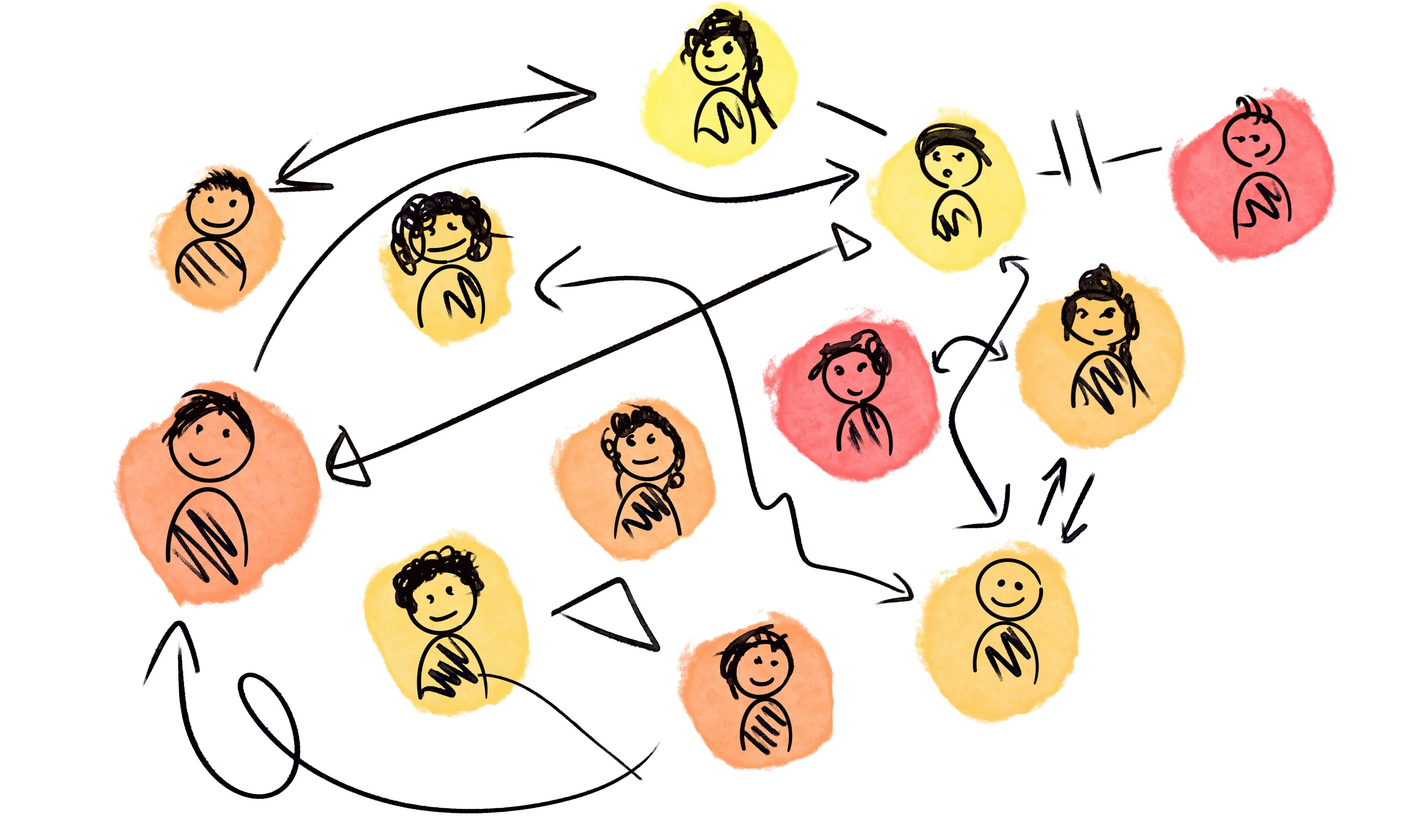Cultivating Creativity: Idea Generation and Elaboration
Navigating the Early Phases of the Idea Journey

How do new ideas take shape, and what determines whether they move from “just-an-idea” towards their implementation? This lecture examines the early phases of the “idea journey” 1, focusing on how organizations can cultivate creativity through effective idea generation and elaboration.
Innovation is a social process. We explore how the structure of intra-organizational social networks shapes access to knowledge and information. Social capital plays a central role here: bridging connections give access to diverse perspectives and new information, while bonding ties create trust, support, and a shared language. Both forms of social capital are productive, but they play different roles in the idea journey.
With this foundation, we turn to idea generation and elaboration. Idea generation is the process of producing a variety of creative concepts and selecting the most promising one. Research shows that team characteristics and network structure strongly influence how external insights are utilized—centralized networks, for instance, may limit the effective use of outside ideas2. Idea elaboration, in contrast, is about refining, clarifying, and systematically developing an idea’s potential. Here, the sequencing of networks—whether inside-out, outside-in, or all-in-one—proves crucial for advancing ideas toward maturity3.
Throughout the lecture, we highlight how creativity is embedded in relationships and context, rather than being the product of isolated individuals. By understanding the social dynamics of idea generation and elaboration, organizations can better navigate the paradoxes of innovation: balancing uncertainty and structure, radical and incremental paths, and external novelty with internal coherence.
Literature
- Venkataramani, V., & Tang, C. (2023). When does external knowledge benefit team creativity? The role of internal team network structure and task complexity. Organization Science. https://doi.org/10.1287/orsc.2023.1661
- Ter Wal, A. L. J., Criscuolo, P., & Salter, A. (2023). Inside-out, outside-in, or all-in-one? The role of network sequencing in the elaboration of ideas. Academy of Management Journal, 66(2), 432–461. https://doi.org/10.5465/amj.2020.1231
About the Course
The MSc course Innovation & Entrepreneurship in Context examines how entrepreneurs and organizations create and sustain innovation within their broader environment. Core themes include creativity, entrepreneurial identity, legitimacy, networks, and opportunity structures, with an emphasis on how these factors shape the success of new ventures and the renewal of established firms.
Students engage in interactive lectures, case studies, and team assignments that connect theory to practice. They learn to analyze innovation and entrepreneurship holistically, evaluate internal and external influences, and develop evidence-based recommendations for real companies. Assessment combines a group case study and presentation with an individual exam.
See Perry-Smith, J. E., & Mannucci, P. V. (2017). From creativity to innovation: The social network drivers of the four phases of the idea journey. Academy of Management Review, 42(1), 53–79. ↩︎
See Venkataramani, V., & Tang, C. (2023). When does external knowledge benefit team creativity? The role of internal team network structure and task complexity. Organization Science. ↩︎
Ter Wal, A. L. J., Criscuolo, P., & Salter, A. (2023). Inside-out, outside-in, or all-in-one? The role of network sequencing in the elaboration of ideas. Academy of Management Journal, 66(2), 432–461. ↩︎
Related Posts

Teaching Lectures
From issue-selling to execution: how social dynamics shape idea championing and implementation.

Teaching Lectures
Innovation thrives when firms manage both individual talent and the networks connecting them.

Teaching Courses
A course on creativity, innovation, and intrapreneurship accross different contexts.

Teaching Lectures
Discover how entrepreneurial thinking and innovation management help organizations thrive in a changing world